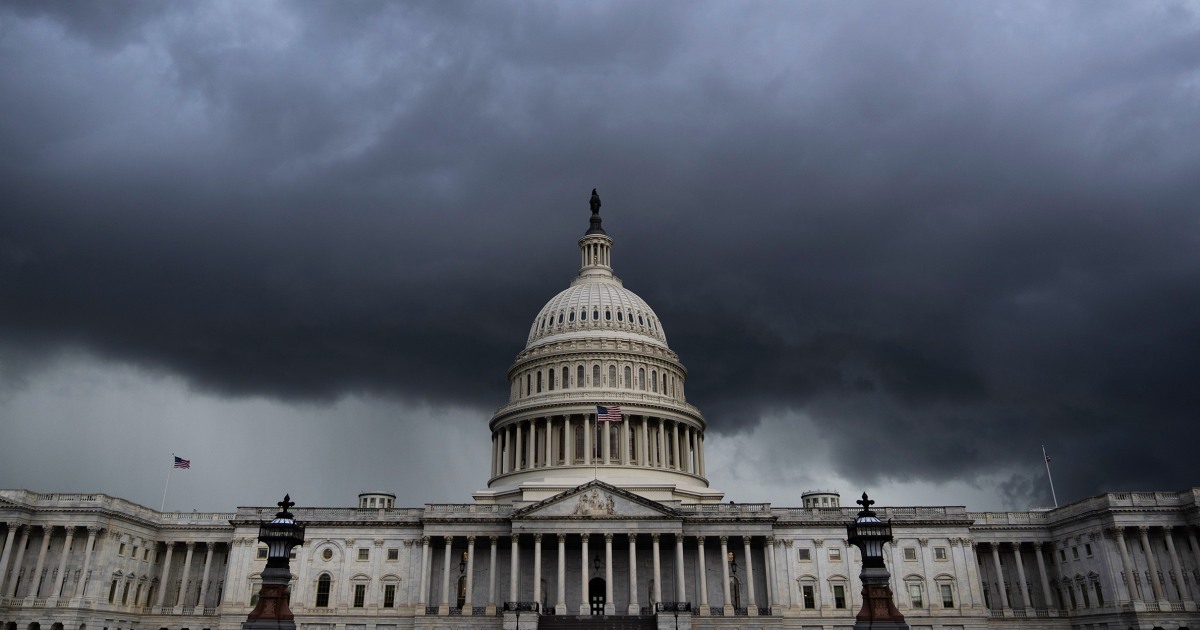Congress has little time to avoid a government shutdown that is set to begin at 12:01 a.m. on Oct. 1. They are nowhere near an agreement.
After a six-week summer recess, lawmakers return to the Capitol on Monday facing a changed political landscape but a vexing, very familiar problem: figuring out how to avert a shutdown.
They have just three weeks to do so. Funding for the government runs out at the end of the fiscal year on Sept. 30, and former President Donald Trump is urging Republicans to force a shutdown unless certain demands are met. A shutdown would close federal agencies and national parks, while limiting public services and furloughing millions of workers just weeks before the election.
The presidential race looms over the final stretch for Congress; it is expected to leave again at the end of the month and return after Election Day. When the House left town for its summer break on July 25, President Joe Biden had just dropped out of the presidential race, Democrats were preparing to pick Vice President Kamala Harris as their new standard bearer, and Republicans were rushing to draw up a new playbook against Harris.
House Republicans have now settled on some lines of attack, which they’ll highlight in politically charged GOP hearings and investigations into both Harris and her running mate, Minnesota Gov. Tim Walz, on issues from border security to the Afghanistan withdrawal.



Reminded of Ted Cruz running around the House and whipping opposition to a government funding deal ten years ago. This led to the historic shutdown of 2013 - the third longest in history - which lasted 16 days and furloughed 800,000 state employees while leaving another 1.3M with delayed paychecks. It was one of the proximate causes of the 2014 downturn and was explicitly listed as the reason for US Government Debt being downgraded to AA from AAA by a number of major private credit agencies.
Four years later, similar tactics under the entirely Republican dominated legislature lead to a 35-day shutdown in 2018. This daisy-chained into the COVID crisis of 2019/2020, sparking a series of flash-crashes and then a final economic plunge in February as the pandemic death toll was swelling and hospitals filled up.
All that is to say, this isn’t a “Trump” thing. Republicans hate the government, love shutdowns, and don’t really care who it hurts so long as it wins them some ideological victories. And while you can definitely argue that the 2014 and 2018 shutdowns hurt their election prospects in subsequent years, what they really salvaged from these fights was permanent reductions in the scope of the federal workforce combined with significant shifts in national priorities (federal debt reduction overtaking climate change and health care reform as top-line priorities).
The Republicans have found a way to extract long term concessions from the federal government via some short-term incumbency defeats. And since they always bounce back as a party, and these incumbents always go on to cushy gigs in the private sector after falling on their swords in the political arena, I’ve got to say that it appears to be a winning strategy in the end.
Trump may lose the Presidency, but Trumpism as a policy appears to have cemented itself within the GOP Congressional majority. Democrats still don’t seem to have a remedy for the decay these shutdowns cause, nor do they seem particularly opposed to the privatization that fills in the gaps these shutdowns create.